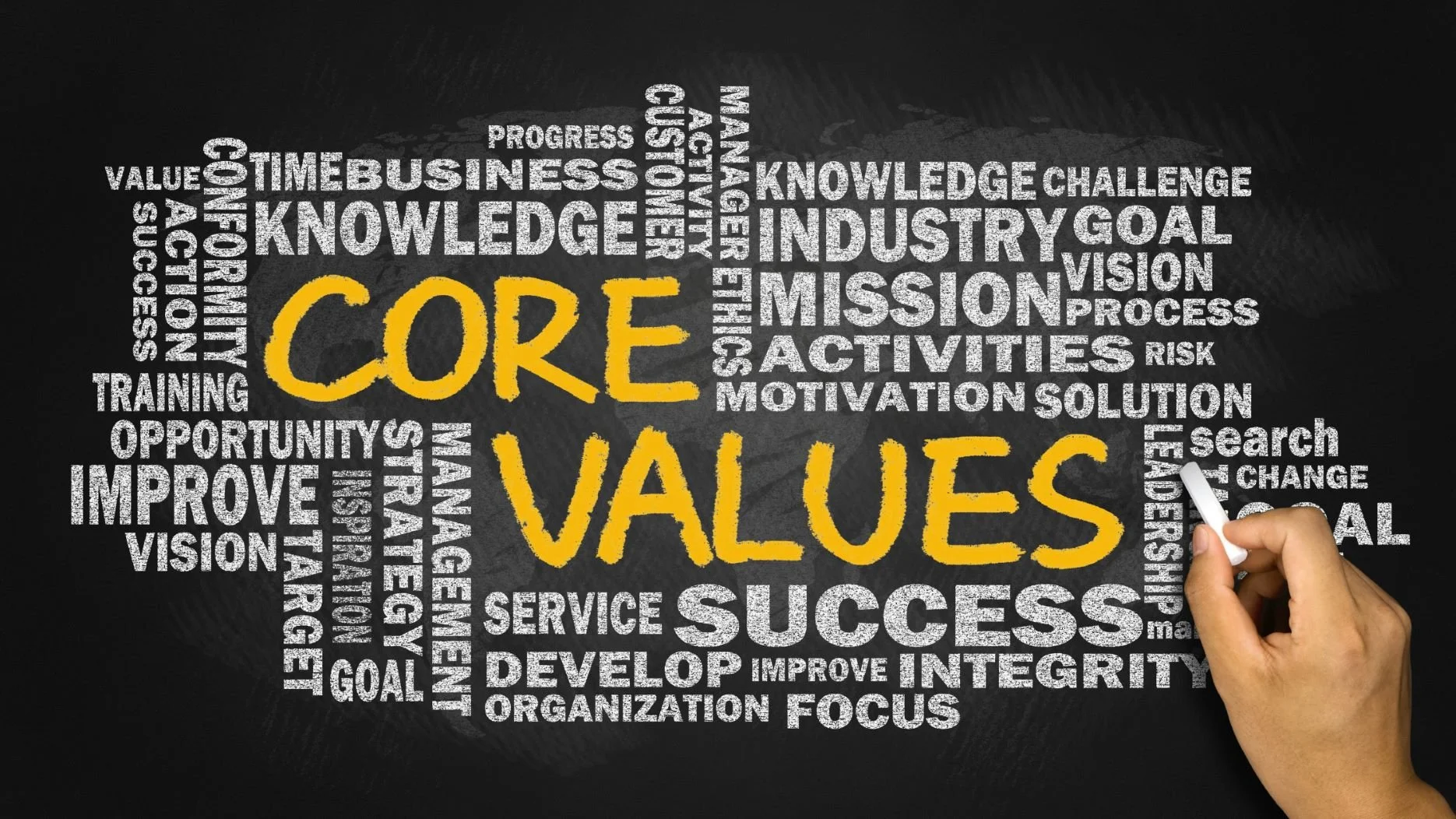Why Your Hiring Process Is Broken—and How to Hire the Right People Every Time
"There’s no good people out there."
If you’re in HR, management, or own a business, you’ve likely heard or even said this phrase. But what if the issue isn’t the talent pool — what if it's your hiring process? Many businesses struggle with attracting and retaining the right people, not because the right people don't exist, but because their approach to hiring is broken.
On the most recent episode of All Things LOCS podcast, we laid out the hiring strategy that guarantees you consistently hire qualified candidates, because let's be honest: hiring great talent has never been more complex. Between building strong teams, refining your recruiting process, and filtering out unqualified candidates, it’s easy to feel overwhelmed.
Too often, the issue starts with a vague or misaligned job description that fails to attract the right applicants. And in today’s remote-first world, the stakes are even higher—especially when you’re managing remote workers and relying on video interviews to assess fit and communication skills. Whether you're scaling a startup or running an established organization, rethinking how you hire is essential to building a team that actually performs, as well as keeping hiring costs to a minimum.
In reality, it's not just about using the right recruitment strategy or writing amazing job postings. You need to understand your business objectives so that you can identify the best employees in order to create a competitive advantage. And beside improving your own process, when you can create a positive candidate experience, you increase your own chances of finding dynamite talent.
So if you are looking for a the best hiring strategies for small business owners or large companies, you have come to the right place.
How to Define the Role You’re Hiring For (Before You Post a Job)
Before posting a job ad, you need clarity. Are you hiring an extrovert who thrives on human interaction, or someone who can focus deeply on numbers and details? One of the biggest mistakes businesses make is being vague: "We need someone." But for what exactly? It's hard to look for potential candidates if you don't know exactly what you need and who you need for the role.
"When you’re looking at designing a particular role, you want to look at a couple of things like: is this an introverted role or is this an extroverted role? Is this more analytically leaning or gut-feel based?" Understanding the behavioral needs of the role is your first step to better hires.
How Behavioral Assessments Help You Hire the Right People
You wouldn’t perform surgery without an x-ray. So why would you hire without data?
"You want to get data on the front end to see if the person is even wired for a particular role." Tools like DISC and Predictive Index help assess if someone’s natural tendencies align with the role you're hiring for. Someone may ace an interview by saying all the right things, but that doesn’t mean they’re a long-term fit. Behavioral assessments add objectivity to your decision-making.
Why Hiring for Personality Diversity Strengthens Your Team
It's human nature to like people who are like us. But that doesn’t mean they’re right for the job.
"Most conflict comes from hiring people like ourselves in roles that require someone different." If you’re a driven, results-oriented leader, you might subconsciously gravitate toward candidates who share your energy. But what your team might really need is someone analytical to balance out your urgency.
Great companies build diverse, complementary teams. That means appreciating personalities different from your own and resisting the urge to always hire your mirror image.
The Role of Core Values in Hiring the Right People
Hiring without defined values is like building a house without a blueprint.
"Don’t hire until you set aside 30 minutes to define your company values." Culture fit starts with clarity. What are the daily behaviors you expect from your team? What do you reward? What do you tolerate?
These core values should drive your interview questions. For example, if one of your values is integrity, ask: "Tell me about a time you had to make a hard decision when no one was watching." The way a candidate answers these questions reveals more than their resume ever could.
Soft Skills vs. Hard Skills: Which One Matters More in Hiring?
Every job needs a different balance of soft and hard skills. The secret is knowing which to prioritize.
"If they're going to be talking to people all day, soft skills matter more than technical skills." For example, your front desk staff needs empathy and poise more than Excel mastery. Meanwhile, your bookkeeper better be precise and accurate, even if they’re not the warmest presence in the office.
Evaluate the amount of human interaction in the role. Is it mostly customer-facing? Is teamwork essential? Or is it more isolated and technical? Your hiring criteria should reflect the daily demands of the job.
How to Build an Interview Process That Actually Works
Hiring shouldn't feel like guesswork.
Use a structured approach that allows your team to evaluate candidates consistently. One recommended tactic: "Use TED questions — Tell me, Explain, Describe. Ask them to tell you a story where they demonstrated one of your core values."
If you’re strapped for time, consider pre-screens or ask candidates to submit short Loom video introductions answering a few key questions. You’ll save time and spot red flags before you even hop on a call.
Also: match the interview format to the role. High-impact roles (like a COO or Director of Ops) may require multiple interviews, test projects, or panel reviews. A front desk role may need just one great conversation.
Where to Find Great Employees Beyond Job Boards
Let's start with the obvious: where do job seekers hang out? Professionally speaking we are talking about the Indeeds and LinkedIns of the world. However, beyond those, there are some great options because if you’re only using job boards, you’re missing out.
"Sometimes Facebook groups outperform Indeed depending on the trade." LinkedIn is great for formal roles. But if you're hiring for sales, trades, or admin positions, tap into Facebook groups, TikTok, or even your own social media audience. You can showcase your culture and attract people who resonate with your vibe.
Don't forget your local colleges and universities either. Internships are a great pipeline for long-term team members.
Top Hiring Mistakes to Avoid if You Want to Build a Strong Team
Here are three critical hiring mistakes that sabotage your efforts:
Hiring without clarity – Rushing into a hire without defining the role, the values, or the behavioral needs leads to constant turnover.
Letting comfort guide decisions – "They seemed like me!" isn't a hiring strategy. Diversity in personality and skillset is what strengthens teams.
Failing to define and test for culture fit – A strong resume means nothing if the person doesn't align with your values and communication style.
Remember: "Just because they act polished in an interview doesn’t mean they’ll thrive in your environment."
Final Thoughts:
Hiring isn't about checking boxes — it's about aligning people with purpose. Use assessments to evaluate behavioral fit, define your core values early, and stop blaming the market. There are great people out there. You just need to become a great hiring organization.
🎙 Ready to Fix Your Hiring Process for Good?
You’ve just scratched the surface. In the full podcast episode, we break down real-world hiring mistakes, psychology-backed frameworks, and how to build a bulletproof hiring system—whether you're scaling a healthcare clinic or running a multi-location business.
👉 Listen or watch the full episode now to learn what most companies get wrong and how you can finally get it right.
And if you're ready to stop wasting time, money, and momentum on the wrong hires...
💼 Book a discovery call with Best Practice Strategies and let’s build a hiring framework that attracts top talent and strengthens your company culture from day one.
📌 Frequently Asked Questions (FAQ)
1. What’s the biggest reason businesses struggle to hire great employees?
Most hiring struggles stem from a lack of clarity. Businesses often rush the process without clearly defining the role, the behavioral traits required, or how to assess culture fit.
2. How can I tell if a candidate will actually succeed in the role?
Use behavioral assessments like DISC or Predictive Index to evaluate whether someone is naturally wired for the role. Then, structure your interviews around your core values to assess mindset and fit.
3. What should I focus on more — soft skills or hard skills?
It depends on the role. Prioritize soft skills for customer-facing or collaborative positions. For technical or independent roles, hard skills may be more critical. Align the focus with the job’s daily demands.
4. Where should I look for quality candidates outside of job boards?
Tap into Facebook groups, LinkedIn, industry-specific communities, local colleges, and even TikTok. Posting on your own social media can attract candidates who already resonate with your culture.
5. How do I make my interview process more effective and efficient?
Use pre-screening tools like short video submissions and TED-style questions (Tell me, Explain, Describe). This helps you quickly filter for values, communication style, and overall fit—before investing time in full interviews.




